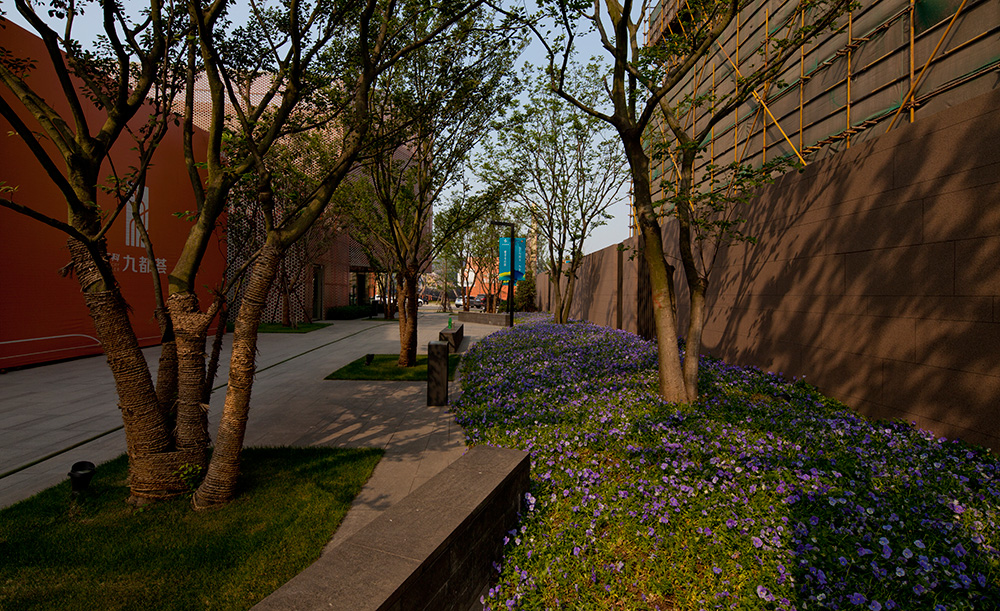业主:南京万科置业有限公司
项目规模:景观面积5.6万平方米
设计时间:2013年
万科九都荟项目位于南京南站城市景观轴线东侧,与南站商业区对街而望,是“南进的南京”新人气聚集地,成为城市“第三极”居住空间,这块土地依偎在秦淮河畔、紧临600多年历史的百家湖,环绕着的牛首山、将军山与方山,景观和文化资源丰富。
项目定义为新都市生活的展示窗口。奥雅认为新的都市生活应该源自对更美好生活的诉求。景观环境要提高人与人的和谐沟通,提倡人与自然的和谐交融。基于这样的定位,我们将项目风格归结为“新都市”“新中式”和“新自然”——融合地域文化,回归自然,并展望未来的居住时代。
融合地域文化指的是在该项目中嵌入中式审美意境和传统的居住模式,集六朝古都之格局,取秦淮河畔之乡情,景观结构延续建筑规划的格局,以高低错落的建筑为城,商业街空中连廊,犹如城门一般;内街空间参差,描摹水乡生活情怀;七园各有诗情画意,取中式花园之意境。回归自然安居,则是指景观通过,水岸,枫林,台地,微地形,花溪和开敞的草坪,塑造隐山而栖,伴水而居的美好感受。展望未来的居住时代是强调生态、文化、社区、自然、都市、科技、信息和艺术的融合,其关键字是融合、发展、开放与交流。
Project Client: Nanjing Vanke Property Co., Ltd.
Project Scale: Landscaping Area – 56,000㎡
Design Time: 2013
The project is located in the east side of the city landscape axis of Nanjingnan Railway Station and is opposite to the commercial area of Nanjingnan Railway Station. It is an emerging hot meeting place of "Nanjing Heading South" and the "Third Pier" residential space in the city. Along the Qinhuai River, this riverside land is close to the Baijia Lake over 600 years old and is embraced by rich resources of landscape and culture including Niushou Mountain, Jiangjun Mountain and Fangshan Mountain.
The project is defined to be an exhibition window for new urban life. L&A Design Group believes that new urban life shall be originated from the appeal for a better life. A harmonious communication between humans and the integration of humans and nature shall be improved via landscape environment. On the basis of this orientation, we propose a style of "new urban", "new traditional Chinese" and "new natural" – integrating with the local culture, going back to the nature, and looking forward to a future residential era.
Integrating with the local culture means the aesthetics of traditional Chinese imagery and residential mode are embedded to reveal a capital layout of the past six ancient dynasties. Qinhuai River’s atmosphere is also presented in the landscape that adheres to its architectural planning. The city is composed of layered buildings that enclose a city-gate-like air corridor as a commercial street. The layered space of the inner street is a metaphor of waterfront town with seven gardens of different poetic charms. The traditional Chinese garden is the imagery. Going back to the nature means through the landscape design of waterfronts, groves of maples, terraces, micro-landform, flower stream and open lawn, a secluded residence nearby mountains and streams with wonderful feelings are created. Looking forward to a future residential era emphasizes the integration of ecology, culture, community, nature, city, technology, information and art, and the key words are integration, development, open-up and communication.



















